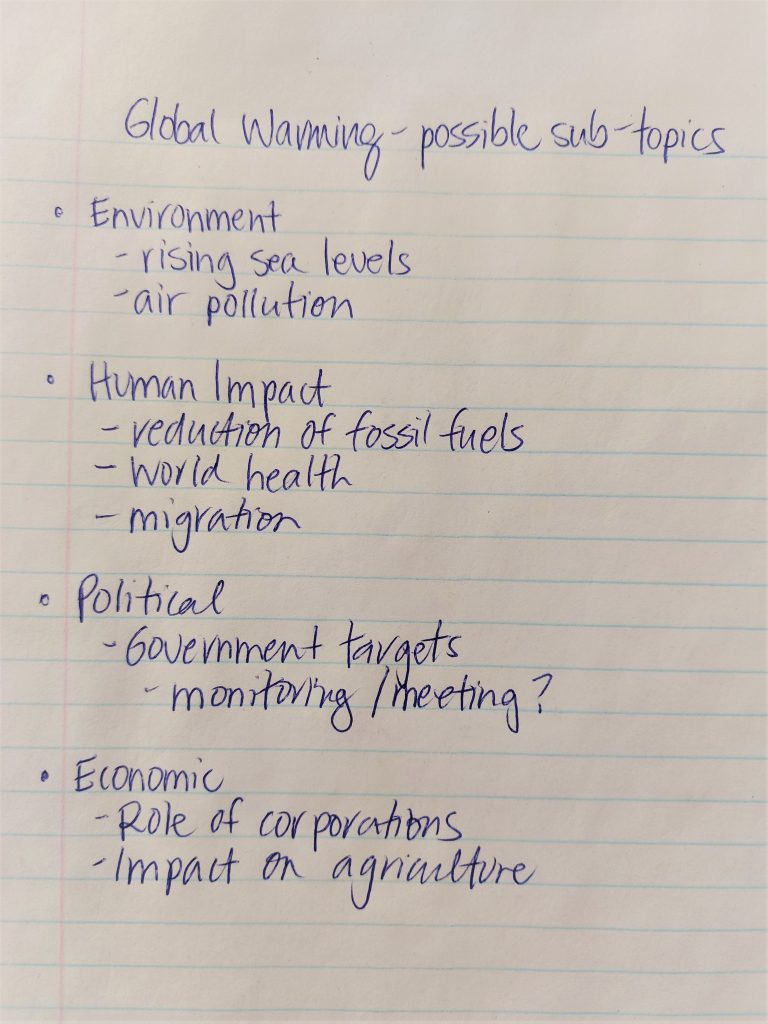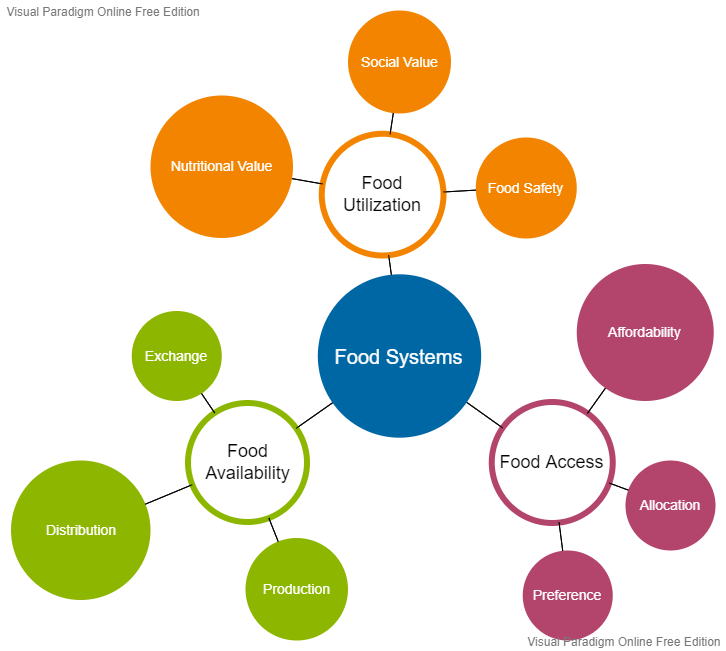Chapter 9: Pre-Writing
Strategies for Getting Started
 How do you start writing a draft? There isn’t just one right way to begin writing. Some people dive right in, writing in complete sentences and paragraphs, while others start with some form of brainstorming or freewriting. Others choose a strategy based on the writing task and how familiar they are with the topic. Here are some common strategies for getting started (sometimes called invention strategies).
How do you start writing a draft? There isn’t just one right way to begin writing. Some people dive right in, writing in complete sentences and paragraphs, while others start with some form of brainstorming or freewriting. Others choose a strategy based on the writing task and how familiar they are with the topic. Here are some common strategies for getting started (sometimes called invention strategies).
There are several methods that help you generate ideas and see connections between ideas without writing in complete sentences. We can call these methods “brainstorming.” The following video lists some of the common rules, which all of the methods share. You can turn on your speakers to hear the audio.
Clustering
A cluster is a method of brainstorming that allows you to draw connections between ideas. This technique is also called a tree diagram, a map, a spider diagram, and probably many other terms.
- To make a cluster, start with a big concept. Write this in the center of a page or screen and circle it.
- Think of ideas that connect to the big concept. Write these around the big concept and draw connecting lines to the big concept.
- As you think of ideas that relate to any of the others, create more connections by writing those ideas around the one idea that connects them and draw connecting lines.
Notice that you can use color, larger type, etc., to create organization and emphasis. Remember that your cluster doesn’t need to look like anyone else’s. Create the cluster in the way that makes the most sense to you. Once you have finished the cluster, you can use another technique to generate actual text.
Listing
Listing is just what it sounds like: making a list of ideas. Here are two kinds of lists you might use.
Brainstorm list: Simply make a list of all the ideas related to your topic. Do not censor your ideas; write everything down, knowing you can cross some off later.
Example

What I know/don’t know lists: If you know that your topic will require research, you can make two lists. The first will be a list of what you already know about your topic; the second will be a list of what you don’t know and will have to research.
Example
Access to Nutritious Food in Canada (Food Security)
What I know:
- Some people and groups in Canada face multiple barriers
- Barriers:
- Financial (e.g., cost of food, income)
- How close people live to grocery stores that sell nutritious food options
- Food supply available in stores
- Extreme climate events can negatively impact all barriers
What I don’t know:
- What are the most common barriers?
- Which areas of Canada have the highest number of people facing these barriers?
- What has been done in the past and how successful were these programs and services?
- What is currently being done by all levels of government to address the barriers?
- What types of programs have been used internationally? Would these work for different areas in Canada?
Adaptations
This section has been adapted from Strategies for Getting Started in The Word on College Reading and Writing by Carol Burnell, Jaime Wood, Monique Babin, Susan Pesznecker, and Nicole Rosevear, licensed under a Creative Commons Attribution-NonCommercial 4.0 International License, except where otherwise noted.
References
Gregory, P., Ingram, J. & Brklacich, MJ. (2005). Climate and Food Security. Philosophical transactions of the Royal Society of London. Series B, Biological sciences, 360, 2139-48. doi.org/10.1098/rstb.2005.1745
Media Attributions
- Home office workspace illustration © Tang is licensed under a CC BY (Attribution) license
- Cluster Diagram adapted by Angie Goertz is licensed under a CC BY (Attribution) license
- Listing Brainstorming Example adapted by Angie Goertz is licensed under a CC BY (Attribution) license
A technique where you simply write what comes to mind regarding a topic or idea, without pausing or going back to edit or revise (that can be done at later steps).
A technique for brainstorming ideas and finding connections between ideas by starting with one central idea, then thinking of related ideas or concepts.


